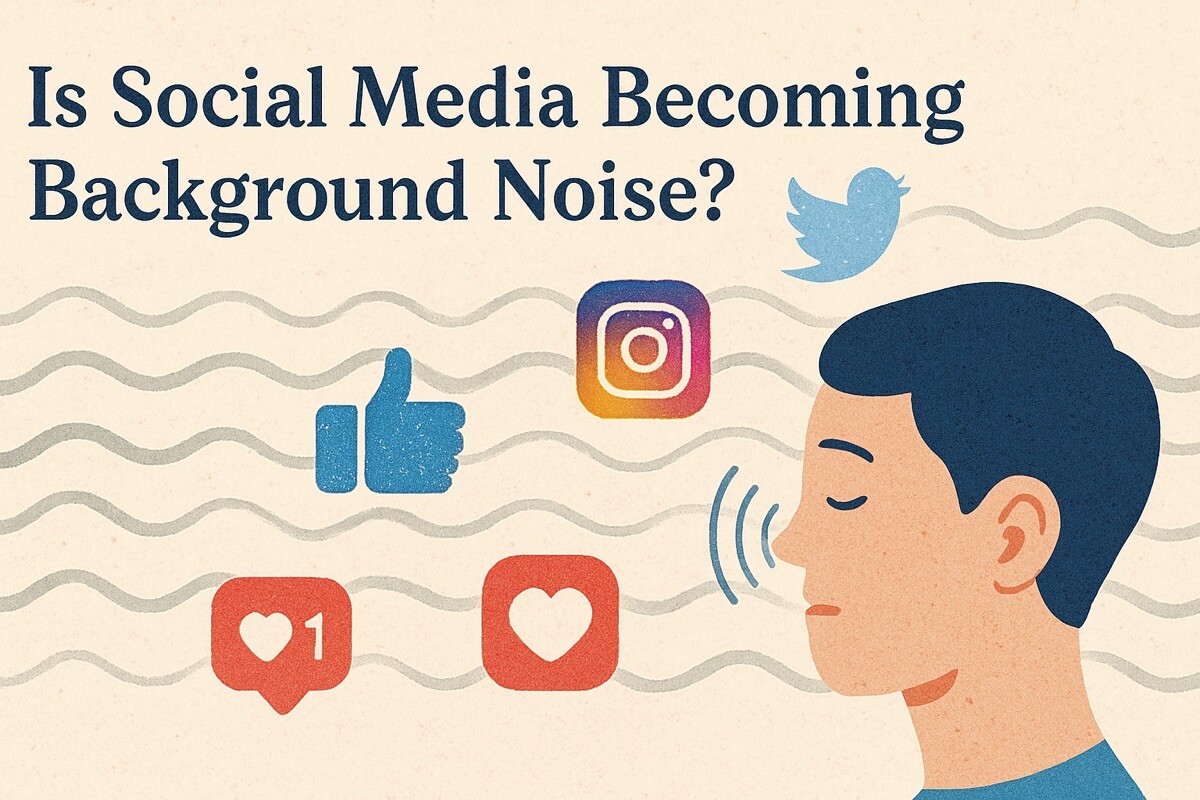
Is Social Media Becoming Background Noise?
In 1971, composer John Cage debuted “60 Seconds of Silence,” a piece that forced audiences to confront the ambient sounds they normally filtered out. Today, social media has become the opposite—a constant stream of content we’ve learned to ignore. The average user scrolls past hundreds of posts daily, retaining almost nothing. What was once a revolutionary communication tool now functions more like digital Muzak: ever-present, rarely noticed.
This shift raises an uncomfortable question: has social media stopped being a medium for meaningful connection and become mere environmental clutter?
The Paradox of Infinite Content, Zero Attention
Platforms optimized for engagement have achieved the opposite effect. Studies show users spend more time on social media than ever while reporting lower satisfaction. The math is simple:
-
2003: Friendster users had ~100 connections
-
2024: The average Facebook user has 338 “friends”
-
Result: A feed so dense it becomes meaningless
We’ve reached peak content saturation. The human brain can’t maintain 338 meaningful relationships—it maxes out at 150 (Dunbar’s number). So we engage in performative connection: liking posts without reading them, commenting with emojis instead of thoughts.
The Rise of Anti-Social Design
Social platforms increasingly resemble slot machines rather than communication tools:
-
Variable rewards (endless scroll)
-
Illusion of control (customizable feeds that still prioritize ads)
-
Withdrawal cues (fear of missing out if you log off)
Yet these addictive mechanisms backfire. When everything demands attention, nothing gets it. The positive effects of social media—community building, information sharing—get drowned in algorithmic noise.
Three Signs Social Media Is Fading Into Background
-
The Meme-to-Meaning Ratio
Platforms once spread ideas; now they circulate recycled jokes. A 2023 study found 62% of viral TikTok content was meme remixes. -
The Notification Blindness Effect
Users now ignore 78% of app alerts (compared to 42% in 2016). Alarms that once triggered dopamine now register as spam. -
The Professionalization of Personal Life
“Authentic” influencers use studio lighting. Vacation photos get edited like magazine spreads. The line between person and brand blurs into obscurity.
Why We Keep Scrolling Anyway
Here’s the uncomfortable truth: social media isn’t failing—it’s succeeding at something else. These platforms never promised meaningful connection; they promised engagement metrics. And by that standard, they’re winning.
The average user:
-
Checks social media 58 times daily
-
Spends 2.5 hours on platforms
-
Retains less than 5% of viewed content
We’re not participants in a digital town square. We’re audiences for a 24/7 performance we didn’t buy tickets to.
The Counterintuitive Case for Less
Early web forums thrived on scarcity—limited storage meant pruning old threads. Modern platforms encourage hoarding:
-
Instagram keeps all stories for 24 hours
-
Twitter (now X) archives every tweet forever
-
Facebook memories resurface decade-old posts
Perhaps real connection requires constraints. The most vibrant online communities today? Private Discord servers with strict membership limits.
Breaking the Noise Pollution
Reclaiming attention starts with small rebellions:
-
The 10-Second Rule
Before posting, ask: “Will this matter in 10 seconds? 10 months?” -
Platform Fasting
Try using social apps only on desktop. The added friction reduces mindless scrolling. -
Intentional Following
Curate feeds to 150 accounts max—Dunbar’s number applied digitally.
The Coming Quiet Revolution
Signs suggest a cultural shift:
-
Gen Z adopts “finstas” (fake Instagrams) for real sharing
-
Niche platforms like Geneva reject algorithmic feeds
-
Books like “Digital Minimalism” top bestseller lists
People crave what social media originally promised: connection without commercialization.
Conclusion: Listening for the Signal
John Cage’s silent composition revealed how noise shapes perception. Today’s social media does the inverse—it’s all signal with no meaning. The solution isn’t logging off entirely, but learning to listen differently.
The next evolution of digital connection might look less like infinite scrolling and more like a carefully tuned radio: sometimes static, sometimes music, but always intentional. After all, the positive effects of social media emerge not from volume, but from resonance.
Perhaps what we need isn’t more content, but the courage to occasionally press mute.

